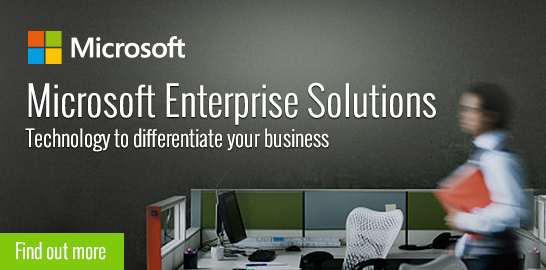When Microsoft announced its ‘Cloud First, Mobile First’ strategy, not many things were clear. What kind of cloud are they talking about? Will it be Azure at the center of everything? What is a Mobile First strategy from a company that does not even have a marginal influence in the mobile operating system world dominated by iOS and Android. What happens to Windows? What about its devices portfolio?
But, drip by drip, the cloud first, mobile first strategy, is taking shape. While Microsoft made its competitors focus on how it was building its cloud game, layer by layer, the company has already built an enterprise ecosystem that attempts to deliver as much software as possible for companies around the world to consume as a service.
In reality, Microsoft does not even look at things from the cloud angle or mobile angle, but more of: What would an enterprise or business want or need to get things done? If there is an opportunity to address a particular area they just jump on it.
Take Microsoft’s Surface as a Service program as an example. No Cloud, and may be a bit of Mobile, but do enterprises around the world need laptops or tablets? The answer is yes, and Microsoft launched a new leasing program that will allow companies to rent surface devices.
We are not sure if Microsoft was aware about the kind of reception Office 365 would get in the last two years. Just a quick look at the number of features and services Microsoft added to its office collaboration and productivity tool is a clear indication of the kind of importance Office 365 has in Microsoft’s priority list. With 85 million monthly active users, and the cheapest Office 365 business subscription costing $5 per user per month, Microsoft already makes a large amount of money from Office 365.
As all this was happening, Microsoft Azure kept growing at a furious pace, clocking triple-digit growth rates quarter after quarter for the past year and a half. Microsoft not only kept pace with Amazon in cutting costs, it also kept adding data centers around the world; and in a few markets around the world, such as India, they are possibly in the lead as well.
That’s defensibly a cloud first strategy, but one that addresses the needs of none other than enterprises and business around the world.
The acquisition of LinkedIn and the $26 billion that Microsoft was ready to pay for it was the clearest sign that Microsoft was looking at an enterprise software ecosystem rather than to create a company that does so many different things. LinkedIn was the world’s largest professional network with 433 million users at the time of Microsoft’s acquisition. This week they crossed the half-billion mark, pulling more weight behind Microsoft’s CRM push with Dynamics 365.
But why pay $26 billion for a professional network that was hardly making any money? In fact, LinkedIn lost $166 million on the $2.9 billion in revenues it made in 2015. But LinkedIn made a lot of sense because, once again, who were its users? Enterprises and businesses around the world. And most businesses around the world were already using LinkedIn to reach out to potential customers, and it was playing a small but significant role within sales teams.
Microsoft can take care of your IT infrastructure, and it already had the best office productivity and collaboration tool in the market so that you can take care of your internal communication. And if you wanted hardware, there was a small program that allowed you to lease the hardware from Microsoft. Is there a missing piece? What other software do enterprises and businesses around the world use?
Enter CRM (Customer Relationship Management) and ERP (Enterprise Resource Planning) – two multi-billion dollar enterprise-focused software segments that were already getting swept away by SaaS.
Microsoft was slowly building Dynamics 365 as its solution for this segment and, with LinkedIn, it becomes a much more potent force.
The customer list is also slowly growing, with customers like HP, AccuWeather, Ecolab, Helsana and Renault Sports Formula using Dynamics 365.
If you sat down and created a list of ten software tools any enterprise would need, Microsoft would tick nearly all the boxes. There’s a bit of this and a bit of that, but there are a whole lot of enterprise software services, or as it is better known in IT, an enterprise ecosystem.
Given a choice, any enterprise would like to have a single vendor to get their work done. They don’t want to worry about integration issues and multi-platform problems. A single vendor with multiple product offerings can take care of that, making sure all the different parts of the puzzle work together seamlessly, while the user can concentrate on his work.
In a sense, it is the enterprise equivalent of what Google has created for Android. That ecosystem consists of many of the tools individual consumers typically use to get through their day – Gmail, Maps, Hangouts, Play Store, Google Play Music and so on.
That structure – the ecosystem – works. And it works for any tech company that builds one around its core product. In fact, it can even work for a retailer like Amazon with its Amazon Prime ecosystem.
Microsoft’s preference is for an enterprise ecosystem, and everything from Windows 10 to Microsoft Azure to “SaaS 365” (Office and Dynamics) to Surface devices is representative of that ecosystem. Consumers like you and I are merely the “bonus beneficiaries” that happen to generate additional revenues for Microsoft.
In other words, Microsoft is not actually a ‘cloud first, mobile first’ company. It is an ‘enterprise first, all else second’ one.
Hey, would you do us a favor? If you think it’s worth a few seconds, please like our Facebook page and follow us on Twitter. It would mean a lot to us. Thank you.



